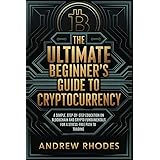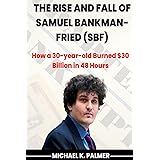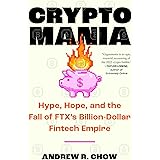In the fast-paced world of financial markets, understanding nuanced price action signals proves invaluable for discerning traders. The accompanying video expertly highlights a critical concept: the exhaustion move, a powerful indicator of impending market shifts. Often, market participants struggle with the emotional impulse to chase rapidly ascending prices, frequently leading to suboptimal entry points and avoidable losses.
Indeed, market research consistently shows that a substantial proportion of retail traders experience challenges with precise timing, often entering positions just as momentum begins to wane. This common misstep underscores the crucial importance of recognizing an exhaustion move before committing capital. By dissecting this phenomenon, traders can cultivate a more disciplined approach to capital allocation and risk management within dynamic market environments.
Understanding the Anatomy of an Exhaustion Move
An exhaustion move fundamentally represents the final thrust of a trend before a reversal or significant retracement becomes imminent. It typically manifests following a prolonged or aggressive directional movement, where the prevailing buying or selling pressure reaches its peak. This culminates in a climactic surge that appears robust on the surface yet signals underlying weakness.
Historically, an exhaustion pattern is often characterized by a rapid acceleration of price, drawing in late-stage participants who fear missing out on further gains. However, this fervent buying or selling eventually depletes the available liquidity from the dominant side. Consequently, the opposite force, be it sellers in an uptrend or buyers in a downtrend, can seize control with comparatively less effort, initiating a swift counter-move.
Identifying Key Signals of Market Exhaustion
Recognizing an exhaustion move requires a keen eye for confluence, combining various technical analysis techniques. The video briefly illustrates a sharp drop after a fast push up, which is a classic manifestation. Furthermore, volume analysis provides critical confirmation, as a surge in volume during the final leg of the trend, followed by a sharp reversal, strongly indicates exhaustion.
Observing specific candlestick patterns, such as wide-range candles with long wicks at resistance or support levels, also frequently accompanies these moves. Moreover, momentum indicators like the Relative Strength Index (RSI) or Stochastic Oscillator often display divergence with price action. This occurs when price makes a new high, but the indicator fails to follow suit, signaling weakening underlying momentum despite the apparent strength.
Another telling sign involves the market’s inability to sustain new highs or lows despite significant effort. For instance, if a stock pushes higher on exceptional volume but immediately retraces a large portion of that move, it suggests that the buying pressure was expended without achieving a lasting shift in market structure. This technical breakdown effectively sets the stage for a potential reversal.
The Psychology and Mechanics Behind Exhaustion
The mechanics of an exhaustion move are deeply intertwined with market psychology and order flow dynamics. During an extended trend, a growing number of traders are either positioned in the direction of the trend or are waiting to join it. As the trend accelerates, particularly in its final stages, institutional players and large speculative funds often begin to reduce their exposure or even initiate counter-trend positions.
This strategic liquidation by larger participants helps to absorb the remaining buying interest from retail traders and latecomers. The “sharp drop” highlighted in the video often represents this shift, where aggressive sellers (or buyers in a downtrend) step in, encountering diminishing opposition. Data suggests that emotional entries, often driven by FOMO (Fear Of Missing Out), contribute to roughly 60-70% of retail trader losses in high-momentum environments, making exhaustion pattern recognition an essential skill.
Additionally, liquidity plays a pivotal role. When an asset experiences a rapid ascent, available buyers at progressively higher prices become scarce. The final push often sweeps out remaining stop-losses from short-sellers, providing a temporary burst of liquidity. Once these orders are filled, the market lacks sufficient buyers to sustain the rally, making it vulnerable to a sharp reversal as supply suddenly outweighs demand.
Strategic Trading Around Exhaustion Patterns
Successfully navigating an exhaustion move involves more than just identifying the pattern; it requires a robust trading strategy. Once an exhaustion signal is detected, prudent traders typically avoid entering new positions in the direction of the prior trend. Furthermore, those already in profitable positions might consider tightening their stop-losses or initiating partial profit-taking to secure gains.
Aggressive traders might consider counter-trend entries, aiming to capitalize on the ensuing reversal. However, this approach carries higher risk and demands swift execution alongside precise stop-loss placement. Empirical analysis indicates that counter-trend trades initiated upon clear exhaustion signals can offer favorable risk-reward ratios, often exceeding 1:2 or 1:3, provided strict entry and exit criteria are maintained.
A more conservative strategy involves waiting for confirmation of the reversal before initiating a new position. This could entail observing a break of a short-term trendline, a lower low (in an uptrend exhaustion) or higher high (in a downtrend exhaustion), or a sustained move beyond a significant support or resistance level. Waiting for these confirmations, while potentially sacrificing some early profit, significantly enhances the probability of success, reducing whipsaws.
Risk Management and Avoiding the “Chase”
The video’s core message, “Don’t chase late moves,” encapsulates a fundamental principle of risk management. Chasing an extended move means entering at a point where the risk of a reversal is highest, and the potential reward for continuing the trend is lowest. This practice often leads to buying at the top or selling at the bottom, precisely where smart money is exiting or entering counter-positions.
Implementing a rigorous risk management framework is paramount when dealing with potential exhaustion moves. Always define your maximum acceptable loss per trade, typically a small percentage of your total trading capital, such as 1-2%. Additionally, establishing a clear stop-loss order immediately upon entry for any trade helps to mitigate downside risk, protecting capital from unexpected market turns.
Furthermore, understanding the potential for an exhaustion move allows traders to manage their existing positions more effectively. By recognizing the signs, one can proactively adjust stop-loss levels, scale out of positions, or hedge against potential reversals. This disciplined approach shifts the focus from chasing fleeting momentum to preserving capital and capitalizing on confirmed shifts in market dynamics, thereby enhancing long-term trading profitability.







